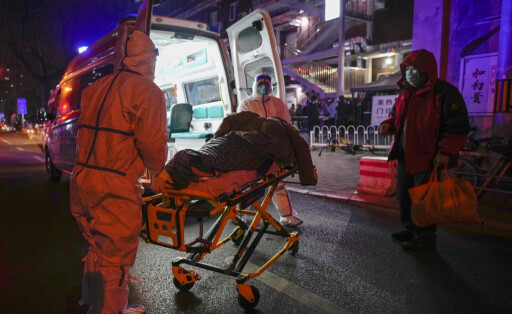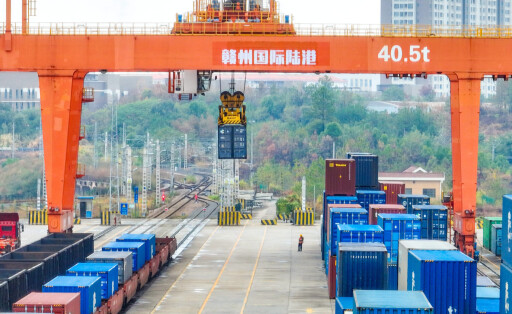The healthcare system in China has the task of keeping the world's most populous country healthy. Since 2016, it has been undergoing modernization for this purpose. All the news on this topic is available from the Table.Media editorial team.
How is the healthcare system in China structured?
The healthcare system in China is based on clinics and hospitals. There are no medical practices or family doctors, which is why the Chinese go to the hospital for every little thing. In some cases, they only go to the hospital to get a prescription for medication. Those who live in the countryside and get sick go to smaller clinics. More serious cases are treated in community health centers. Both facilities have the problem of being poorly equipped and suffering from a shortage of money. Many Chinese therefore go directly to the hospitals in the big cities, where there is often a shortage of doctors. The extremely unequal distribution of resources between urban and rural areas is also considered one of the biggest challenges facing the healthcare system in China. University hospitals and military hospitals are among the flagship facilities.
How is the healthcare system in China financed?
Financing for the healthcare system in China comes from private, government and statutory sources. In 2016, spending amounted to about six percent of gross domestic product. That is, about half as much as in Europe (ten percent) and one-third of U.S. spending (17 percent). 40.2 percent of health spending in China came from private sources, as calculated by the World Bank. The remaining 59.8 percent came from health insurance companies and the public purse. In Germany, the ratio is 15 percent to 85 percent. Overall, per capita spending is $440.9 per year (2017). In Germany, it was already $5,600 in 2019. In the world's most populous country, there are a total of two doctors per 1,000 inhabitants. In Germany, for comparison, there are 4.5. For years, the Chinese Communist Party has therefore been trying to expand the healthcare system.
Who has access to health care in China?
Almost all Chinese have access to health care in the People's Republic. As early as 2011, the coverage of China's health insurance system was 95 percent. To achieve this, the Communist Party has launched three insurance programs: UEBMI: For white-collar workers in urban areas. URBMI: For children, unemployed or disabled people in urban regions. NRCMS: For the rural population. However, some of the health insurance plans in China require the insured to pay a high co-payment. Only the UEBMI covers 68 percent of the costs of a hospital stay. In rural areas, the figure is only 44 percent. A major problem is the care of migrant workers. Most of them are insured through the NRCMS in their home towns and often cannot afford treatment in the city.
What role does medicine play in the healthcare system in China?
Traditional Chinese medicine (TCM) plays an important role in the healthcare system in China. Healing medicine in China accounts for between ten and twenty percent of Chinese healthcare. China's head of state Xi Jinping actively supports the healing arts, which is why the offerings are growing. From a scientific point of view, however, the central treatment methods of acupuncture, moxibustion, tuina anmo, shiatsu, qigong and taijiquan are controversial and considered pseudoscientific.
What is the diet of the Chinese?
The diet of the Chinese is classically based on a lot of rice, grains and cooked vegetables. In addition, there is little fish and meat. Dairy products are hardly used in traditional cuisine. Nutrition is a pillar of treatment in Chinese medicine. It is based on the five elements, i.e. all five tastes - sweet, sour, salty, bitter and umami. Ideally, all five are represented in every meal to support all organs in their function.
What is the role of the pharmaceutical industry in healthcare in China?
The role of the pharmaceutical industry in healthcare in China depends heavily on the fact that pharma is a growth market in China. Accordingly, the importance of the pharmaceutical industry in the People's Republic will increase in the coming years. As part of the Healthy China 2030 plan, domestic research and production are to be strengthened. To this end, financial support programs are in place to make this sector more competitive internationally and to increase the number of patents. To this end, work is being done on innovation centers and pharmaceutical clusters. China has already achieved initial successes in the fight against the coronavirus. Sinopharm and Sinovac were able to deliver corona vaccines in record time. Both companies have developed a so-called dead vaccine. From Cansino Biologics came a vector vaccine.
Has the healthcare system in China been reformed?
Back in 2016, the Chinese Communist Party decided to reform China's healthcare system in a way. Under the title Healthy China 2030, policymakers unveiled an ambitious development plan to improve health in China. The goal is to increase life expectancy by three years to a total of 79 years by 2030 and to reduce the premature mortality rate from chronic diseases by thirty percent. To achieve this, healthcare spending is to be massively increased so that there are more doctors in China. Rural areas in particular are to receive better care. The Healthy China 2030 program also focuses on disease prevention and health promotion. For example, the number of people who regularly exercise is to increase from 360 million in the reference year 2014 to 530 million. The use of traditional Chinese medicine, i.e. medicine without drugs, is also to be supported. Healthy food and a balanced diet are also elementary.
What role do startups play in healthcare in China?
Digitalization in particular is intended to improve the healthcare system in China. Accordingly, startups play a significant role in the field of e-health. Investments are high. Powerful companies are trying to capture the market early with start-ups. For example, Ping An, a major insurer, founded the portal Good Doctors. It offers online consultations, hospital referrals and appointments, health management and wellness interaction services. Alibaba also has its own health division, Alibaba Health. It focuses on online pharmaceutical retail, online consultations and drug prescription. Tencent has established WeDoctor Healthcare. It is divided into healthcare, cloud, insurance and pharmaceutical businesses. The Internet conglomerate also funds a variety of healthcare startups. In 2018 alone - the last full fiscal year before the Corona crisis - $42.8 billion in venture capital flowed, McKinsey calculated. About 1,000 health tech startups existed in China as of September 2019. The Corona crisis, in particular, has driven the digitization of healthcare in China. During the height of the pandemic, half of healthcare in the People's Republic could already be done online, the World Health Organization (WHO) estimates.
News on the healthcare system in China
The modernization and expansion of the healthcare system in China is of central importance to the people of the People's Republic. Abroad, the large number of healthcare startups in particular is arousing interest, as they offer lucrative investment opportunities. Table.Media's editorial team has all the news on the topic.






